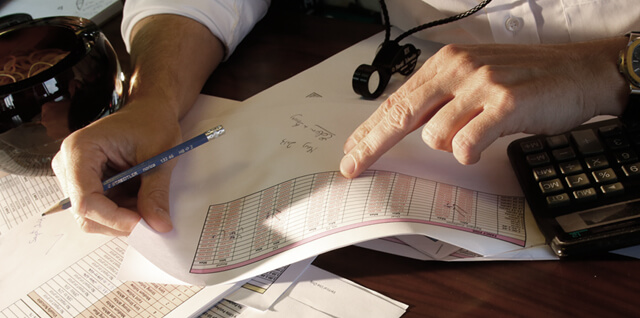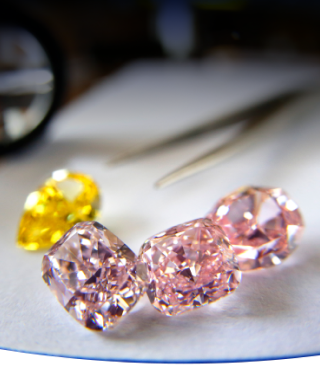Pricing a fancy color diamond is a difficult task due to the number of variables involved. The cost will be an approximation based on a combined reading of the diamond’s gemological parameters with more subjective aspects of its aesthetic value. A nuanced understanding of how a fancy color diamond will be appreciated by the consumer market is fundamental to pricing a diamond correctly.
The Rules of Supply and Demand
As with any other commodity, demand is the factor which governs the price of fancy color diamonds; their value will change over time as trends evolve. It is for this reason that some stones – despite their size or rarity – will not be as highly valued because they may be difficult to incorporate into wearable jewelry, or the color could be undesirable at the time of sale.
The value of a particular cut is subject to demand. Cuts that are more versatile for jewelry, such as large pear shapes, may be more highly valued than cuts specifically targeted toward one type of jewelry piece.
It is vital for fancy color diamond buyers to place greater significance on certain qualities when looking at the price of a stone. These qualities have been ranked in order of importance corresponding to price.
Color:
Color is the most important factor. The stronger the saturation level, the rarer the stone. Diamonds that showcase vibrant color will obtain significant premiums on their price. Color saturation is measured from levels “Faint” to “Fancy Vivid”.
Color Dispersion:
There are several levels of color dispersion, which allows for a wide range of quality within the “even” grade. The dispersion of color throughout the stone is crucial to its value. A high level of color dispersion is sought after as, more typically, dispersion is somewhat patchy or may exhibit a black, colorless frame. Stones without colorless patches are considerably more valuable.
Clarity:
In the fancy color diamond sphere, we look for rich color, saturation and character – the role of clarity is more important for colorless diamonds than for fancy color diamonds. Clarity has little impact on the price of a colored diamond, especially for very rare stones. For example, there is a much bigger impact on price for a 5 ct Fancy Yellow in the VVS2-SI1 range, compared to a 3 ct Vivid Blue in the same range, where the clarity grade is inconsequential because Vivid Blue stones are so rare.
Fluorescence:
Naturally occurring fluorescence is a unique quality that some fancy color diamonds possess and it can have an impact on their price. Many diamond buyers maintain that fluorescence – specifically blue fluorescence – which only appears under UV light, gives the stone a hazy quality and reduces the value. However, less than 0.2% of diamonds that fluoresce exhibit these qualities.
About 25%-35% of diamonds fluoresce and only 10% show that strengths of fluorescence affect appearance. More than 95% of diamonds that fluoresce produce a blue color and on rare occasions they may fluoresce yellow, orange or green. Pinks tend to fluoresce frequently so the price will not be negatively impacted as it might in a yellow diamond where a strong blue fluorescence may appear.
Fluorescence in low to medium doses has no aesthetic impact on the stone and therefore should not detract from its value. In some cases, when the color of fluorescence compliments the body of the stone, it may generate a stronger, more vibrant color and drive up the price of the stone.
Polish & Symmetry:
The value of a fancy color diamond primarily lies in facet alignment verses facet symmetry, as facet alignment can enhance the stone’s color intensity. For colorless diamonds symmetry is an important quality, but in a fancy color diamond symmetry will not create an aesthetically pleasing appearance. Fancy color diamonds are often cut “free-style” to avoid issues that may arise with color dispersion and yield. The importance of polish and symmetry is frequently overrated for fancy color diamonds.
Depth:
The depth of a diamond refers to the height of a stone divided by its width. Fancy color diamonds with low depth percentage are greatly valued as they look larger than their actual weight (this is true as long as the color distribution of the stone is not compromised because of the shallowness of the diamond). Very shallow stones earn a premium because of their rarity. Most fancy color diamonds are cut with a high depth percentage, so when we see a shallow stone with excellent color retention, it deserves a premium.
An understanding of the complicated dynamics at play is one of the key aims of the Fancy Color Research Foundation in our efforts to better educate retailers and consumers about fancy color diamonds.


